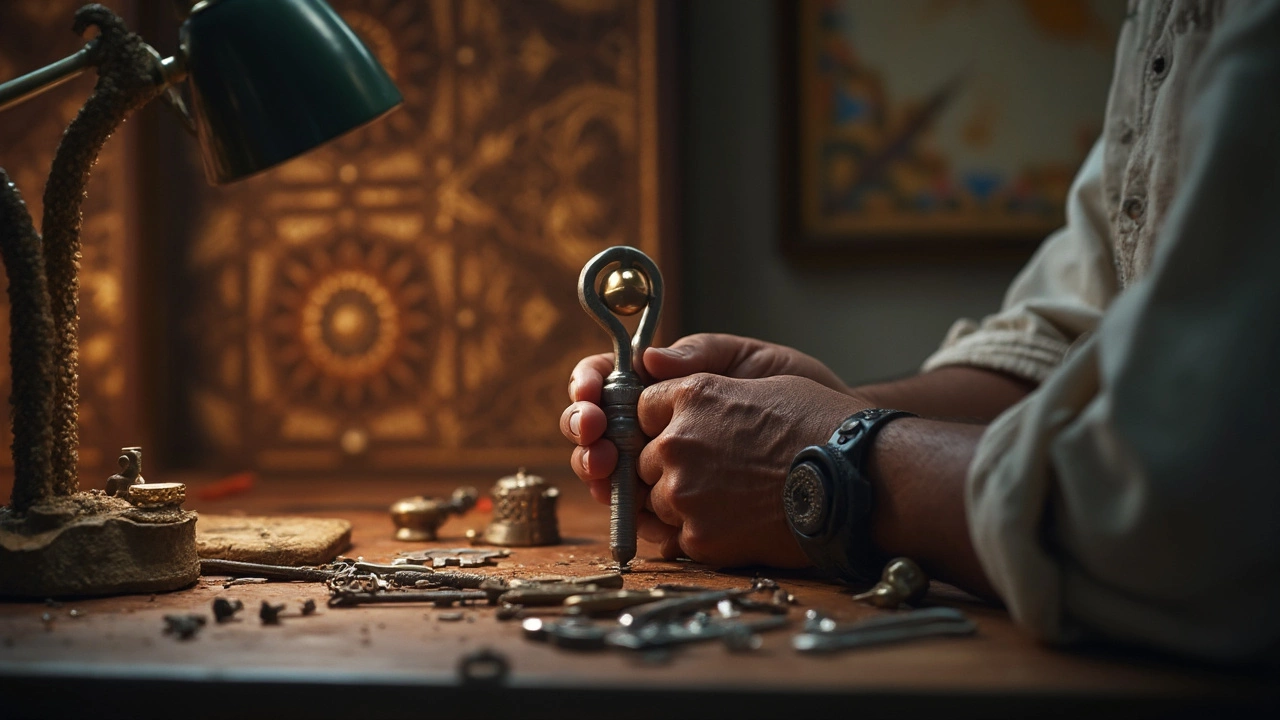
Have you ever wondered if it's possible to rekey a padlock? You might think it's a task reserved only for door locks, but surprisingly, that's not the case. Rekeying a padlock is a clever solution when you want to preserve the lock while changing the key that opens it. Imagine you've got a trusty padlock with sentimental value or one that's part of a security system, and you just don't want to chuck it away.
So, here's the deal: if you're in India and want to dive into the art of locksmithing, understanding how rekeying works is a valuable skill. The secret sauce lies in the lock's cylinder, and with some training and the right tools, you can switch out that cylinder or change the internal configuration to work with a new key. It's like giving your padlock a new identity without changing its face!
While it's not as straightforward as rekeying a simple door lock, the process isn't rocket science either. Knowing when and why to rekey rather than replace can save you time and money. Plus, it can give you peace of mind knowing you control the access to your secured items. Ready to explore how it works? Let's dive in!
- Understanding Padlock Construction
- The Rekeying Process: Is It Possible?
- Tools of the Trade
- When to Rekey vs. Replace
Understanding Padlock Construction
Alright, let's break down what makes a padlock tick. At first glance, a padlock might seem like a simple piece of hardware, but there's quite a bit going on inside. The padlock's main job is to safeguard stuff, so its construction is all about durability and security.
Every padlock is built with a few essential parts. First, there's the body, which is the solid core. It’s typically made from hardened steel to withstand any attempts at breaking it open. Inside the body is where the locking mechanism sits. Often, this mechanism is a pin tumbler or a wafer tumbler system, similar to many door locks. This is where the magic of rekeying happens.
The shackle is the U-shaped component that loops through whatever you're locking up. When you turn the key, the mechanism inside the body either clamps the shackle in place or releases it, allowing the padlock to open. This is why understanding the lock’s internals is crucial for mastering locksmith rekeying.
Another critical element is the cylinder, sometimes called the plug. This is where you put your key. Inside the cylinder, pins of varying lengths line up to match your key's unique profile. When the key is inserted, these pins align just right to allow the cylinder to rotate, releasing the shackle. It's like a tiny orchestra playing in harmony.
Here's a fun fact for you: the strength ratings of padlocks can vary considerably. You might see ratings on packaging, indicating the level of security they provide. Some padlocks are designed for light-duty tasks, like locking up a toolbox, while others are built to secure industrial equipment.
To give you an idea, check the table below showing a few standard classes of padlocks based on security levels:
| Type | Material | Typical Use |
|---|---|---|
| Basic Padlock | Brass | Luggage |
| Standard Security | Stainless Steel | Home Gates |
| High Security | Boron Steel | Industrial Settings |
Now you know what's happening beneath the surface when you're dealing with padlocks. Whether you're curious about locksmithing or planning to spruce up your locksmith training skills in India, getting acquainted with these components is a solid start.
The Rekeying Process: Is It Possible?
You might be wondering, can you really rekey a padlock? Well, the short answer is yes, but it depends on a few factors. Not every padlock on the market is designed for rekeying, and that's where things get a bit interesting. If you’re thinking about trying this out, make sure your padlock has a removable cylinder—that’s key to the whole operation.
The rekeying process involves changing the internal pins within the lock to match a new key. This means you don’t have to toss your padlock just because you're worried about spare keys floating around. Here's a brief rundown of how this usually works:
- First, remove the cylinder from the padlock. This is where things can get tricky, depending on the lock type. Some padlocks have hidden screws or clips that need careful handling.
- Next, open up the cylinder. Inside, you'll find tiny pins and springs, which are matched specifically to your current key. The goal is to swap these around or replace them to fit a new key.
- Arrange the pins to align with the new key’s pattern. This is a meticulous process but not impossible for a patient hand.
- Finally, reassemble the cylinder into the padlock and test it with the new key to ensure it's working smoothly.
So, who should you call if you need a hand? Your best bet is a locksmith, particularly in the bustling training hubs across India, where pros are trained in these very tasks. A knowledgeable locksmith can guide you on whether rekeying is viable for your particular padlock.
It's important to weigh your options, though. If rekeying seems a bit complex or if the lock isn’t designed for it, replacement might be the more straightforward route. But if you’re up for a challenge and eager to learn a new skill, this is your chance!

Tools of the Trade
Alright, if you're thinking of diving into locksmithing and want to master rekeying a padlock, you'll need some essential gear. Let's talk tools! Now, if you're in the locksmith business or just a keen DIY enthusiast, getting your hands on the right toolkit is key (pun intended!).
First up, you'll need a pinning kit. This is the go-to for anyone hoping to become a pro at rekeying. A classic pinning kit includes various pins, springs, and maybe even a plug follower that'll help snug everything in place. It's like the treasure chest for a locksmith rekey padlock scenario.
Then comes the pinning tray. Imagine all those tiny pins rolling around everywhere – a tray helps keep them organized and makes sure you don't lose one mid-project. Keeping everything tidy is clutch because losing tiny parts means starting all over.
Next, a key gauge is super handy. Sometimes you’ll find yourself needing to measure key cuts precisely since not all keys are created equal. This tool helps ensure your new key blends well with the reconfigured lock.
Don’t forget plug followers! These nifty tools help in removing the cylinder plug from the lock without losing springs and pins inside. Having a set can make life a lot easier as you master rekeying techniques.
Of course, no locksmithing gig would be complete without a trusty set of screwdrivers and pliers. You'll need them for opening and closing the lock and adjusting anything that doesn't fit quite right.
With these tools locked and loaded, you'll be ready to tackle rekeying locks with confidence. Investing in good quality tools can boost your efficiency and accuracy, transforming you from a newbie into a well-equipped lock alteration whiz!
When to Rekey vs. Replace
Ever been in a situation where you couldn’t decide between rekeying a padlock or just throwing in the towel and getting a new one? Yeah, it happens. Let’s break down when it makes sense to rekey instead of replacing the whole lock.
Firstly, if your padlock is in good condition and serves its purpose, rekeying can be the smarter choice. Say you’ve lost a key or you’re worried someone unauthorized might have access to your padlock, rekeying changes the key that opens it, giving you that peace of mind without wasting money.
- Cost-Efficiency: It’s generally cheaper to rekey than to buy a brand-new lock, especially if you have several padlocks keyed the same.
- Maintain Matching Functionality: For those with multiple locks keyed alike, rekeying maintains harmony without the headache of changing all locks and keys.
But when should you actually think about replacing the lock? If your padlock is worn out or damaged, maybe with rusted parts or jammed components, it might be time to say goodbye. In cases of high-security concerns, where the integrity of the lock is compromised, e.g., after a break-in attempt, it's more sensible to replace it.
Check out this quick comparison:
| Scenario | Action |
|---|---|
| Lost key, lock intact | Rekey |
| Lock is damaged | Replace |
| Upgrading to higher security | Replace |
| Maintaining a key system | Rekey |
Deciding between rekeying and replacing is a mix of practicality and safety. If the lock's body is sturdy and the problem is mainly about the key, then rekeying is a sensible path. But remember, security should never be compromised, so if there's any doubt about the lock’s integrity, investing in a new one might be the safer bet.
